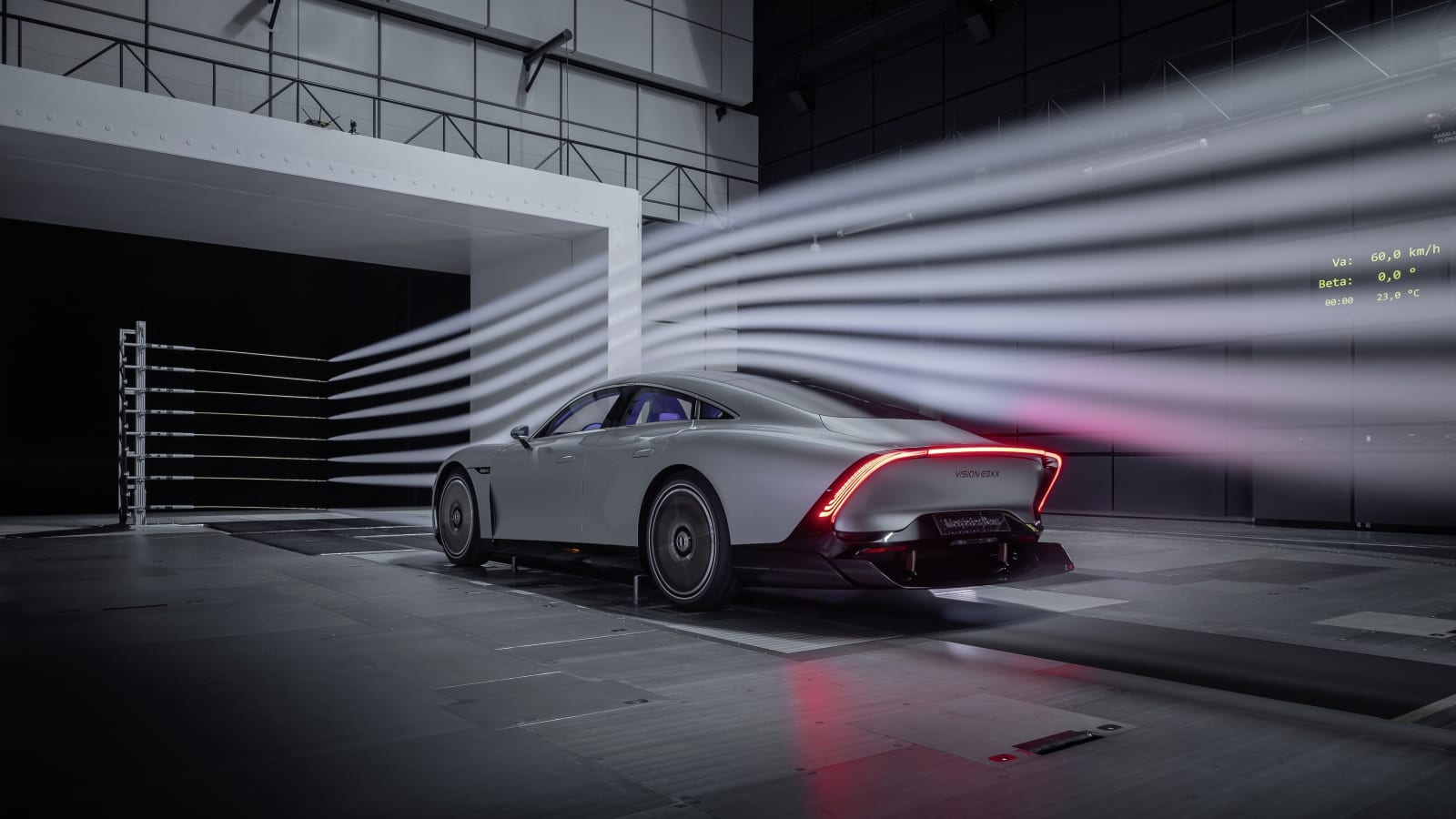The Mercedes-Benz EQS already has the lowest drag coefficient — 0.20 Cd — of any current production car for sale, but Mercedes can do better, and the Vision EQXX has done just that. This technology project achieves a final CD of only 0.17, and that with a body that is even more beautiful than that of the EQS.
In fact, the Vision EQXX looks a lot more like a sports car than a dash of efficiency. That’s nothing short of commendable, but it’s also less of a surprise than it seems. After all, the shape of a supercar is quite aerodynamic if you remove the giant wings and splitters that normally adorn them. Going even further, the Vision EQXX design isn’t far off in concept land. This legitimately looks like a car that Mercedes-Benz could put into production. It even has mirrors and door handles! Will Mercedes ever do such a thing? The company has given no indication that it will happen, but either way, this design is serious enough that we wanted to know all about how designers and aerodynamics got to the 0.17 Cd.
To start with, there is the shape/silhouette of the car. The Vision EQXX may technically be a four-door sedan, but it doesn’t take the traditional three-box design you’d expect from an S-Class or C-Class. That’s because the traditional three-box sedan design isn’t the most aero-efficient shape you can make — Mercedes-Benz Chief Design Officer Gordon Wagener even told us that EVs could very well be the end of sedans for that reason. as we know them now. View both the EQS and EQE as examples from Mercedes-Benz. To be more aero efficient, you’re much better off with a teardrop-shaped roofline that wraps all the way back to an abrupt tear-off edge at the rear. Mercedes optimized that teardrop shape for the EQXX Vision, perhaps to a mistake.

The lower rear roofline appears to cut directly into the rear passenger compartment as headroom is compromised. That’s less of an issue for a compact car like the Vision EQXX, which may not often carry rear passengers, but for cars like the EQS that must have deluxe rear seats, that roofline needs to be punched much higher. It’s a game of give and take, and it’s a game we expect to play as manufacturers try to reduce drag to get more range for their EVs. One way Mercedes says it can combat that roofline is to simply recline the seats at a more aggressive angle, which it does in the EQXX to provide more headroom.
Aside from the distinctly smooth shape, details abound in the Vision EQXX that help it reach 0.17 Cd. Up front, the frontal area is smaller than the CLA and the Smart EQ ForTwo. The subtle vents on the sides of the front bumper are intended to match with the wheels to reduce drag. Wheels and tires are big pain points when it comes to towing, but the Vision EQXX uses super thin and tall (20-inch) wheels and tires. Bridgestone Turanza Eco tires have been further optimized with special aerodynamic sidewalls and the wheels themselves are made from forged magnesium with covers to allow smooth airflow over them. Since Mercedes is Mercedes, those covers are transparent to still be able to see the rose gold-accented wheels underneath.
You may be wondering, where are the wheel fenders? Turns out Mercedes tried that idea and then ditched it for aesthetic reasons. It would force the already 50mm track reduction at the rear into an even greater track reduction, so Mercedes decided to do without. The goal was to create an efficient and beautiful design, and beauty won this round.
“The problem with the spats is that you have to increase the boat tailing at the rear even more, so that the difference between the front and rear becomes even greater,” said Teddy Woll, head of aerodynamics at Mercedes-Benz.

A nice piece of technology at the back of the car is the active rear diffuser. It allows Mercedes to optimize the rear of the car regardless of the speed at which you are driving. Once you reach 37 mph, the diffuser moves out in two steps and improves drag at higher speeds.
“It folds down at a lean angle and then unfolds to ensure the perfect alignment of the rear end,” says Woll.
It’s even designed to retract when it detects an impending crash, though Mercedes won’t say if it’s considering the active diffuser as a production item.

There is also the issue of wind tunnel development. Mercedes says it used about a third of its usual wind tunnel development time for the Vision EQXX, due to its ability to do development work using augmented reality and virtual reality. That Mercedes was able to achieve this low Cd with even less wind tunnel time than usual makes it all the more remarkable.
Perhaps most impressive when it comes to the EQXX is that Mercedes has put together an incredibly efficient car that looks like something you’d want to be seen in. It is attractive, attractive and everything we expect from a Mercedes-Benz.
“In line with our philosophy of sensual purity, we have created spectacular proportions that combine beauty with efficiency,” says Wagener. “The resulting body flow provides revolutionary aerodynamics. The fact that the end result is as beautiful as it is is a testament to the skill of our design team working closely with the aerodynamics experts.”
Related video:
